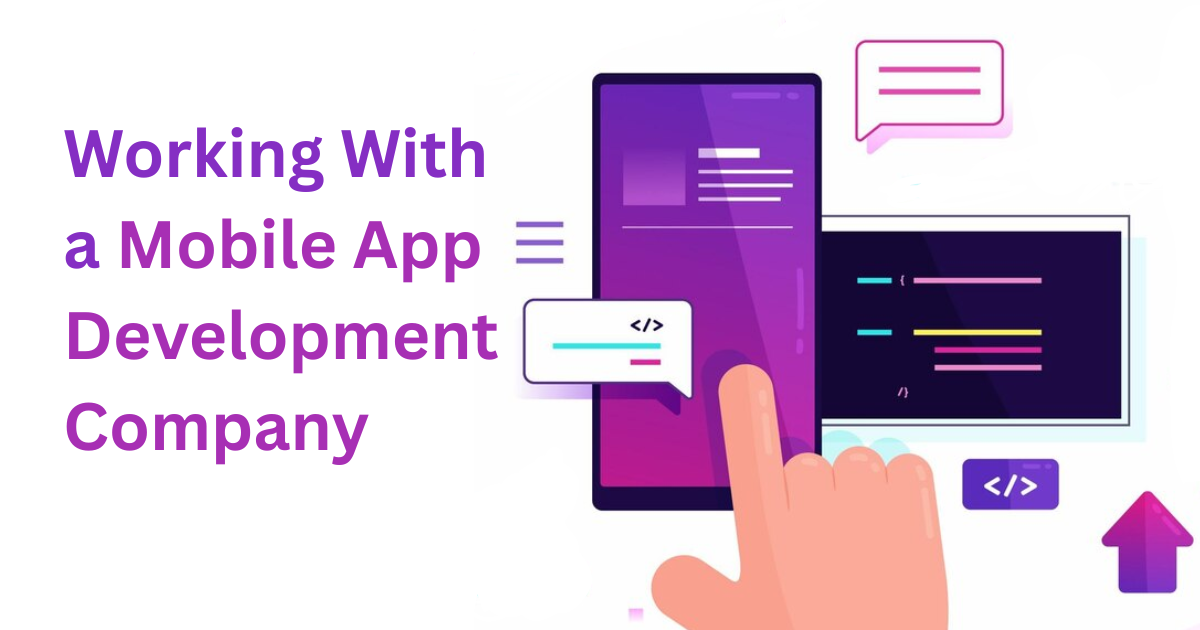What to Expect When You Work With a Mobile App Development Company
Introduction
In 2024, mobile applications continue to dominate the digital landscape. According to Statists, mobile apps are projected to generate over $935 billion in revenue this year. Additionally, a report by BuildFire highlights that 21% of millennials open an app more than 50 times daily. With increasing demand, working with a mobile app development company has become a critical step for many businesses aiming to maintain a competitive edge.
This article provides a detailed overview of what to expect when partnering with a mobile app development company. It outlines the development process, communication practices, timelines, costs, and technical responsibilities involved. By understanding the nuances of this collaboration, you can better prepare for a successful app project.
Initial Consultation and Discovery Phase
The first step in working with a mobile app development company is the discovery phase. This phase establishes the foundation of the entire project.
What to expect:
- Requirement gathering sessions
- Market and competitor analysis
- User persona development
- Technology feasibility checks
During this phase, the team defines project goals, business requirements, and user expectations. You may also discuss the preferred technology stack, such as React Native, Flutter, or native development using Swift and Kotlin.
Real-world example: A retail client required a loyalty app. During discovery, it was found that their users preferred offline functionality. This insight influenced technology choices and feature prioritization.
Proposal and Project Scope Definition
Following discovery, the mobile app development company will prepare a detailed project proposal.
Key components of the proposal include:
- Scope of work (features and functionality)
- Timeline with milestones
- Cost estimates
- Technology stack recommendations
- Deliverables and responsibilities
You should expect to review this document carefully and ask for clarification where needed. It’s also common to sign a non-disclosure agreement (NDA) and a service-level agreement (SLA) at this stage.
UI/UX Design Process
User experience design is a vital step in mobile app development. The design process typically follows best practices from tools like Figma, Sketch, or Adobe XD.
Expected deliverables during design:
- Wireframes for app screens
- Interactive prototypes
- Design guidelines for typography, colors, and UI elements
The goal is to ensure intuitive navigation and visual appeal. Regular feedback sessions are common, allowing for adjustments based on client input.
Example: A healthcare app included features for elderly users. The design incorporated large touch targets and minimal clutter to improve usability.
Agile Development and Iteration
Most mobile app development companies use agile methodology. This approach divides the development process into small, manageable sprints.
Benefits of agile development:
- Faster iterations and time-to-market
- Regular feature demos and reviews
- Easier adaptation to changing requirements
Each sprint typically lasts 1–3 weeks and ends with a deliverable. Developers and testers work in tandem to implement features and fix bugs. Code repositories like GitHub or Bitbucket are used for version control.
Table: Common Agile Sprint Activities
| Activity | Description |
| Sprint Planning | Define tasks and responsibilities |
| Daily Standups | Short meetings for progress updates |
| Sprint Review | Demonstrate completed features |
| Retrospective | Analyze what went well and what didn’t |
Backend Development and API Integration
Backend systems are crucial for app performance. These include databases, APIs, and authentication systems.
Common backend technologies include:
- Node.js and Express for JavaScript applications
- Firebase for real-time database and auth
- AWS and Google Cloud for scalable infrastructure
Security is prioritized. Authentication, encryption, and secure data storage are implemented from the start.
Example: For a food delivery app, the backend handles real-time driver tracking, order updates, and payment processing.
Quality Assurance and Testing
Before launching, the app undergoes rigorous testing. The mobile app development company ensures the app meets performance, usability, and security standards.
Testing types include:
- Functional testing
- Performance and load testing
- Device compatibility testing
- Security audits
Automated testing tools like Appium and XCTest improve testing efficiency. Manual testing remains essential for real-world scenarios.
Deployment and Launch
Once testing is complete, the mobile app is prepared for deployment.
Deployment steps:
- Preparing release builds for iOS (App Store) and Android (Google Play)
- Submitting for store review and approval
- Setting up analytics and crash reporting tools
Each store has specific guidelines. The mobile app development company ensures compliance to avoid rejections.
Tip: Prepare store assets in advance, such as app screenshots, descriptions, and privacy policies
Post-Launch Support and Maintenance
App development does not end with launch. Ongoing support ensures the app remains functional and up-to-date.
Common post-launch services include:
- Monitoring and bug fixes
- App updates for OS changes
- Feature enhancements based on user feedback
Service level agreements often define the scope and timelines for support tasks.
Communication and Project Management
Effective collaboration depends on clear communication and structured project management.
Typical tools used:
- Slack or Microsoft Teams for communication
- Jira or Trello for task tracking
- Google Drive or Confluence for documentation
Weekly meetings and progress reports help maintain transparency. Most companies assign a dedicated project manager as the main point of contact.
Estimated Timelines and Budget Expectations
Timelines vary depending on app complexity. A simple app may take 3–4 months, while a complex one can take 9 months or more.
Average development timelines:
- Simple app: 3–5 months
- Medium complexity: 5–7 months
- Complex app: 8+ months
Costs also vary. According to Clutch, the average cost to develop a mobile app ranges from $30,000 to $150,000.
Table: Cost Breakdown by Phase
| Phase | Percentage of Total Cost |
| Discovery & Design | 15% |
| Development | 50% |
| Testing & QA | 20% |
| Deployment & Support | 15% |
Intellectual Property and Legal Considerations
Legal protection of your app and idea is important.
Important legal aspects include:
- Ownership of source code and design
- NDA agreements
- Licensing and third-party software use
Ensure the contract specifies IP rights and includes clauses for dispute resolution and termination.
Conclusion
Partnering with a mobile app development company is a structured, multi-phase process. It involves initial discovery, detailed planning, agile development, testing, deployment, and support. Understanding each phase ensures smoother collaboration and better outcomes.
Choose a company with proven experience, transparent communication, and technical expertise. A well-defined approach can help turn your app idea into a robust, scalable product.










